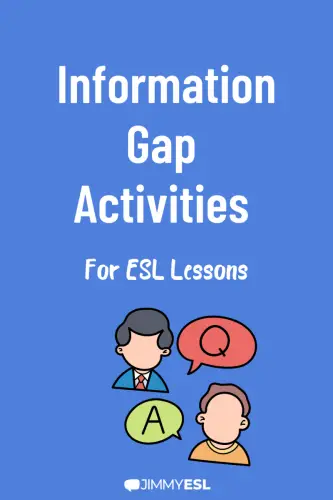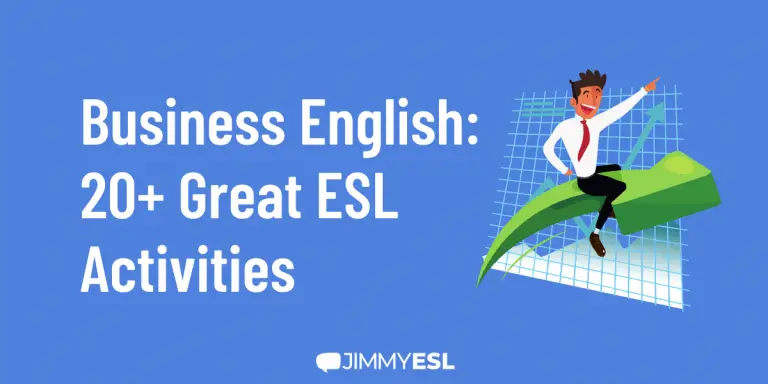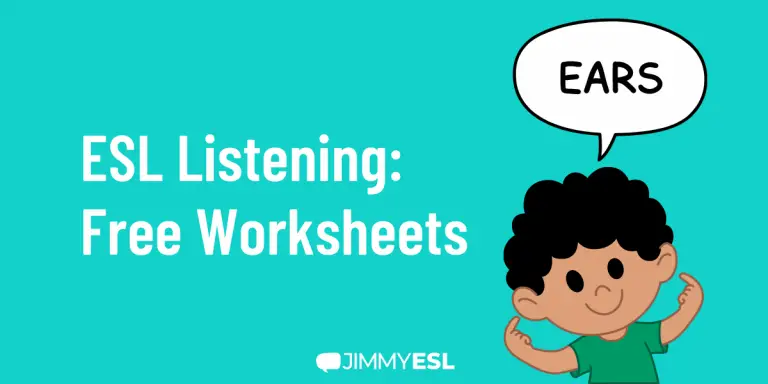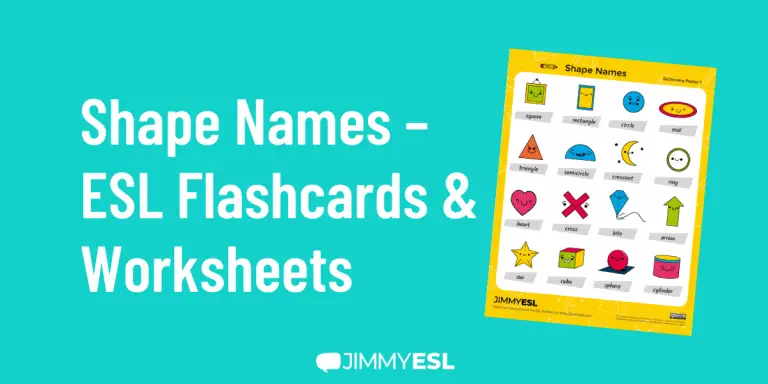10 Great Information Gap Activities for ESL Lessons
ESL teachers are often in a quest of activities that will target a specific language skill and make the students’ experience more interactive and, thus, fun and meaningful.
I often find myself struggling to select and implement convenient speaking exercises. On the one hand, I want these to work and enhance my students’ speaking skills, but I also care if students feel motivated and comfortable doing the exercises.
Considering that fluency in speaking relies on communication, which is the most important part of speaking, it is vital to provide exercises through which students can communicate as naturally as possible.
One of the most effective speaking exercises in ESL lessons are the information gap activities. These rely on asking questions and investigating which is among the best ways to obtain, interpret and use information while communicating.

What Is an Information Gap Activity?
In a nutshell, information gap activities are drills that are commonly used in task-based learning and are most often performed in pairs, although more students can participate. In the basic pair format, one of the students looks at one information compilation while their partner looks at another one.
Both information clusters are related, and students miss the information they need to complete a task or solve a problem, so they have to talk and exchange the information given.
Information gap activities are beneficial as they make students ask questions and provide answers in an authentic, real-life fashion while talking about a cinema program that they want to attend in the evening or scheduling a tennis match or a coffee meeting together.
Information gaps can help your students become successful as speakers, as they would be able to collect and give information in different contexts, used in everyday situations.
I like most about this type of activity because it involves students only, while teachers only give instructions, demonstrate and monitor if the activity is done correctly.
This way, there is a higher interaction between students, and they become active participators in the learning process, which is a big step toward becoming confident, successful speakers of English.
Next to the effective information gap activities in task-based learning and teaching, which focuses on having students communicate and use language as a tool for information exchange and problem-solving, are the opinion gap activities.
Also read: 15 tips to limit teacher talk time during lessons.
What Is an Opinion Gap Activity?
When doing opinion gap activities, students are asked to express their personal ideas, feelings, or preferences in a given context, i.e. real-life situation.
The opinion gap activities for elementary to intermediate ESL students are usually made in the “complete the story” format, however, higher-level students can practice this type of activity by participating in a debate or discussion on a certain topic.
It is worth noting that opinion gap activities don’t have an objective assessment method, meaning there is no right or wrong answer to what students express as opinions or ideas.
As a teacher, however, you can instruct students to use specific grammar constructions and assign them a certain time frame that they should stick to while taking turns speaking.
10 Great Information Gap Activities for ESL Lessons
Now, let’s take a look at my list of the 10 Great Information Gap Activities for ESL Lessons that you can use in your classroom.
1. 20 Questions
Level: Intermediate and above
Divide students into pairs or small groups of 3-4 students. Pick a topic on which you will base your questions, like animals, food, famous people from history, etc.
Write these on paper slips and close them. One student picks a slip of paper and keeps it a secret. The other students ask a maximum of 20 “yes” or “no” questions until they guess what the secret paper slip holds.
2. Drawing Dictation
Level: Intermediate and above
Divide students into pairs. Instruct students that their task is to draw a simple image; e.g., their “dream beach house” or “tree house” without their partner looking at the drawing.
Next, tell them to describe the image to their partner, who should follow the description and ask questions until they reproduce the image of the first student in the pair.
Instruct students to include shape, sizes, colors, exterior parts of the beach house and the area.
Another fun writing activity: Running dictation
3. Role Play
Level: Intermediate and above
Divide students into pairs and create a situation.
For this activity, you have to “create a problem” that students will need to solve. For example: One of the students is a waiter at a luxury restaurant, while the other one is a guest.
The first role-play card should contain a description like, “You are a guest at a luxury restaurant, but the dish you ordered looks a bit and feels lukewarm, plus the glass is stained… (add more problems). You want to get a new dish and don’t want to pay for the first one. Talk to the waiter to solve the problem.”
The other student gets a role-play card that says, “You are a waiter at a luxury restaurant. You have a guest who complains about their plate, although the meal is fresh and shouldn’t be served hot. You can bring them another dish from the menu, but they will have to pay 50% for the first one. Talk to the guest and solve the problem.”
4. Find Your Partner
Level: Upper-Elementary and above
This is an activity where the entire class participates. Prepare cards, two each with the same image printed on it (according to the topic of your lesson).
Each student gets a card, and they must go around the classroom with their cards face down and find the person with the same image by asking “yes” or “no” questions.
Mind to instruct students not to ask directly, “Are you a…?” but tell them to ask descriptive questions.
5. Mingle Activity
Level: Upper-Elementary and above
This activity includes the entire class. Pick your thematic content from covered units for the activity, like classroom items, cartoon characters, cities, etc.
Create a list of items that answer questions like “Where am I?”, “Who am I?”, and “What am I?.” Each student gets a different card (if you have a large class, you can divide them into larger groups). Stick the card on each student’s forehead and tell them that each of them has received a person/object they need to guess.
Next, tell students that they must ask their classmates questions (that you will write on the board to keep things under control) about their person/object until they discover who they are. They aren’t allowed to ask questions which can be answered with “yes“ or “no“.
Example: What does … eat? Where does … sleep? Does it … (verb)? What color is …? Does it have …? How much/many…?
6. Get to Know You
Level: Upper-Elementary and above
You can do this activity by dividing students into pairs or working with the whole class. Prepare lists of questions that refer to a daily schedule but put them in a jumbled order.
Each student should question their partner about their schedule, then order the questions-answers in the right order. Next, students should compare their daily routines and describe the differences and similarities in their routines in front of their class.
Find more icebreaker activities for the first day of school here.
7. Picture Difference
Level: Upper-Elementary and above
Prepare two different pictures on the same thematic content. Divide students into pairs.
The first student describes their picture to their partner. The second student listens to the description carefully and tries to find 4-5 differences in on their picture. Then, the second student describes the differences and the first student should confirm if they are correct.
8. Information Exchange
Level: Intermediate and above
Prepare film or theater programs with 4 pieces each. Include information like date, time, duration, genre, age limit and price of ticket. Make one full copy of the program and one with missing information.
Divide students into pairs. Each student gets a program. The first student looks at the information about the films or plays and uses them to answer the questions by their partner who wants to know more about the films.
9. Same-Different
Level: Upper-Elementary and above
Divide students into pairs. Prepare two samples of different tourist offers for one destination. Tell students that they are friends or a couple who want to go on a vacation at the same place.
They have found different offers, and now each tries to persuade the other that the offer they found is the right one. Include price of the offer, accommodation, air tickets, excursions, and extra activities etc.
10. End-of-School Party
Level: Upper-Elementary and above
This activity is for the entire class. Create a shopping list for an end-of-school party and make a stack of cards that will contain things that students will “need to buy,” like drinks, food, decorations etc.
Give a list and a card to each student. Tell your students to mingle with their classmates and ask them what they bring to the party. Next, divide students into groups and present questions on the board that your students will need to use
What time does the party start? What food, drinks is best to bring? What music should be played? What activities should be planned, like karaoke, etc.?
Instruct students to ask these questions within the group and write a plan for the party. Finally, each student presents their plan, and you can choose the best ones.
Wrapping Up
I hope that this article inspired you to incorporate some information gap activities on my list and make your ESL classroom an interactive environment where students exchange knowledge and enjoy learning.





